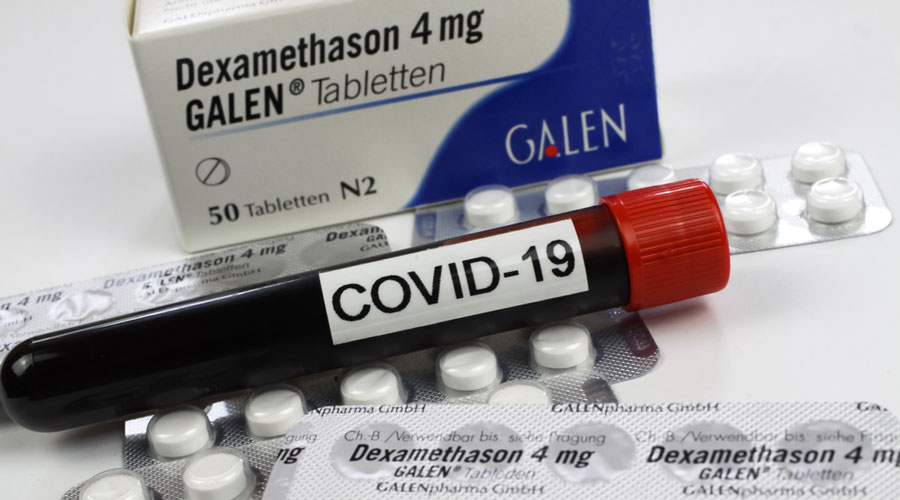India adopted a whole-of-government approach to stimulate local production that helped reduce unit prices and the dependency on global supplies during the COVID-19 pandemic even as no compromises were made on quality in the largest procurement exercise conducted by the government, according to a World Bank report.
A discussion paper of the World Bank titled "India COVID-19 Procurement: Challenges, innovations and lessons", which was released in July, mentioned the supply chain challenges encountered by India during the pandemic and its innovative response.
It takes a close look at the initiatives taken by the Centre to ensure a sustained supply of essential medical commodities during the critical initial phase of the pandemic, including efforts to develop the local market following a whole-of-government approach.
The paper lists certain global experiences and summarises the procurement innovations undertaken by the Centre, including its efforts to develop the domestic market for essential Covid commodities and lifesaving equipment.
A unique feature in India was the private sector's active role in testing, contributing to nearly 50 per cent of the laboratories as well as the venture capital, raising additional resources to support domestic manufacturing of Covid commodities and develop IT-supported innovations for teleconsultation and intensive care unit (ICU) management, the report highlighted.
Severe global supply chain constraints of essential Covid commodities and an unprecedented demand for lifesaving equipment led to an entirely supplier-driven market and a huge variation in prices, the report said.
The challenges faced by India included an extremely limited domestic production capacity of essential medical equipment, inadequate market intelligence, a wide variation in the intensity of the pandemic across the states, price and supply constraints due to an increased demand across the globe and no prior experience of handling a pandemic of this size.
To address this concern, the government took over the responsibility for centralised procurement to support the states. Flexibility under the existing legal frameworks and budgets allowed fast-track procurement, while empowered groups helped accelerate decision making.
The country also imposed export restrictions early and encouraged, facilitated and funded the private sector to support domestic manufacturing and the creation of laboratory facilities.
This enabled accelerated imports to begin with and the development of local markets later on.
The Central Procurement Division (CPD) and the Emergency Medical Response (EMR) division of the Ministry of Health and the Indian Council of Medical Research (ICMR) led India's initial efforts to sustain the supply chains, supported by HLL Lifecare Limited as a procurement agent.
While the CPD primarily focused on the supply of personal protective equipment (PPE), goggles and N95 masks to safeguard the health staff, the ICMR rapidly ramped up the testing infrastructure in partnership with the private sector and established a validation mechanism to scale up the availability of Covid testing supplies, the report said.
This led to the development of specific standards, sourcing appropriate raw material, ensuring the availability of the workforce and maintaining efficient supply chains to deliver finished products in a timely manner to the states.
"A whole-of-government approach engaging all key ministries and state governments was followed while ensuring clear separation of roles and responsibilities of different committees involved in procurement. Handholding the industry, accelerated tendering and pre-dispatch inspections by competent agencies, including testing of random samples, helped to ensure quality of products," the report stated.
In addition to an enhanced access of these critical inputs to the frontline health staff, the initiative also helped steeply bring down the prices of these essential Covid supplies, it noted.
For example, the price of N95 masks came down from Rs 250 to Rs 20 and that of PPE from Rs 700 to Rs 150. Similarly, the price of Reverse Transcription Polymerase Chain Reaction (RT-PCR) test kits, used as a gold standard to confirm the Covid infection, fell from Rs 1,207 to Rs 72 and the price of the Ribonucleic Acid (RNA) extraction kits fell from Rs 336 to Rs 37, while that of viral transport media dropped from Rs 182 to Rs 24 within six months.
Once the market had adequate suppliers meeting the established standards, both the CPD and the ICMR ensured that their products were listed at the Government e-Marketplace (GeM), which enabled the states to place their orders directly, the report said.
Long-term implications of market development in the globalised supply chains need carefully calibrated export controls to balance domestic needs with global market opportunities for local manufactures.
The paper also highlights the value-addition provided by the World Bank through the India-COVID-19 Emergency Response and Health Systems Preparedness Project, which provided USD 1.5 billion of joint financing by the World Bank and the Asian Infrastructure Investment Bank (AIIB).
The scope of the paper is limited to documenting such innovations at the national level in support of sub-national governments to improve access to essential Covid commodities. Procurement of vaccines is not part of the analysis as it often involved multilateral and bilateral contracts as well as special supply chain arrangements.











